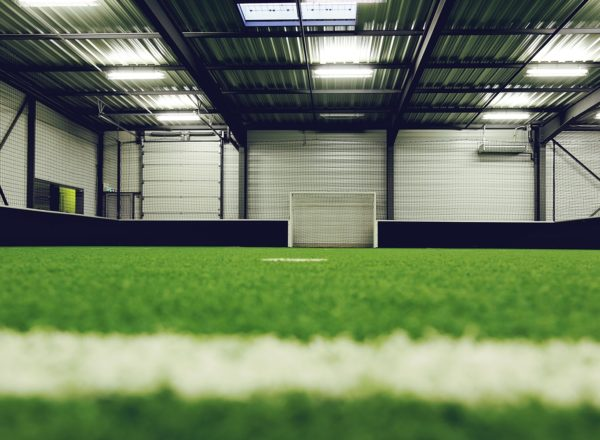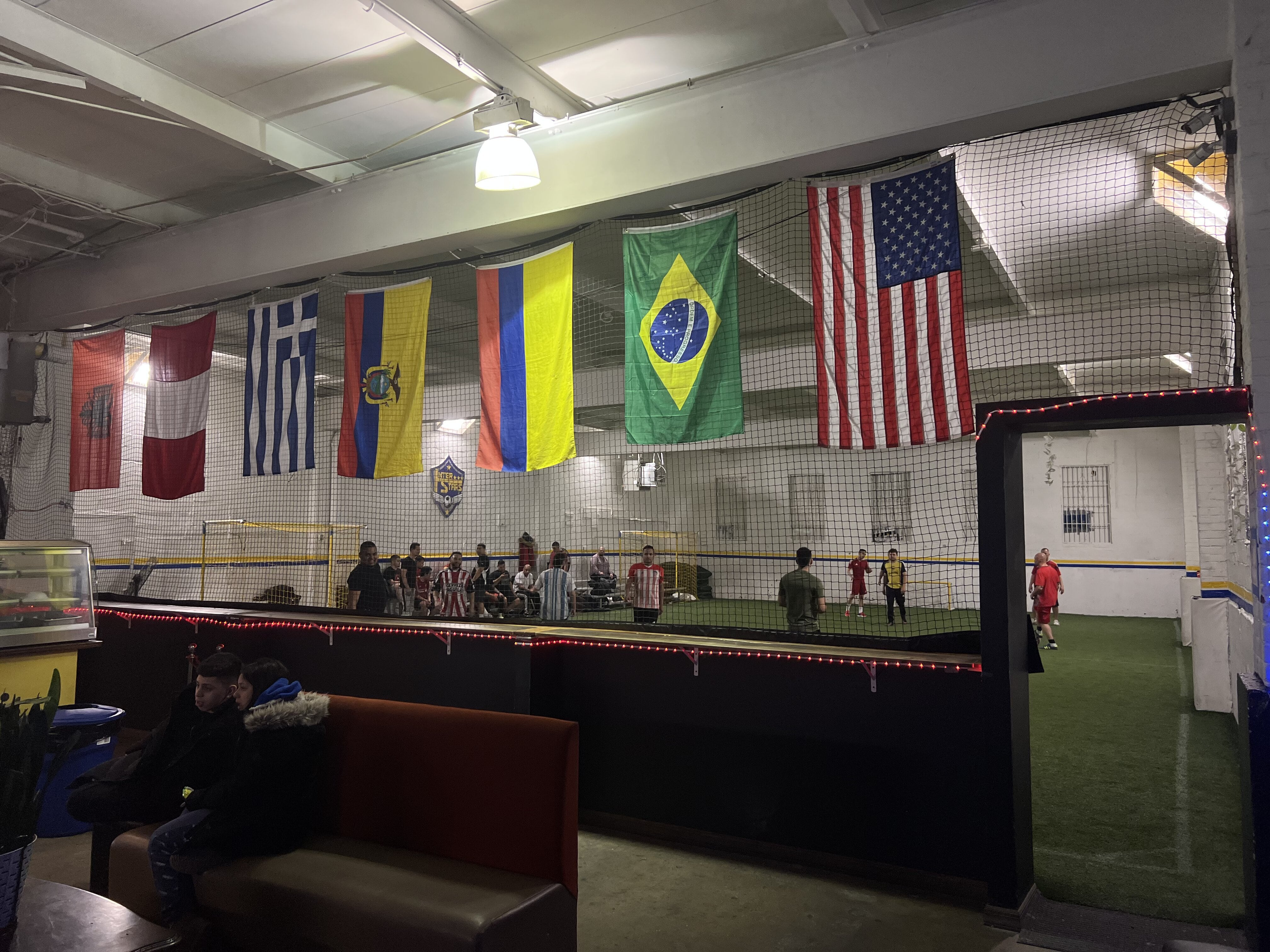How to Start an Indoor Sports Facility

Tue Mar 19 2024
Table of Contents
- Define Your Vision and Goals
- Conduct Market Research
- Secure a Suitable Location
- Design and Customize Your Space
- Develop a Marketing Strategy
- Incorporate an Indoor Sports Facility Management System
- Embark on Your Indoor Sports Facility Journey
Dreaming of turning your passion for sports into a thriving business? Starting an indoor sports facility could be your ticket to success. From soccer and basketball to volleyball and futsal, indoor sports facilities cater to athletes of all ages and skill levels. In this comprehensive guide, we’ll walk you through the process of launching your own indoor sports facility, with the final step being the incorporation of an indoor sports facility management system — OpenGym.
Define Your Vision and Goals
Before diving into the nitty-gritty details, take some time to define your vision and goals for your indoor sports facility. Consider the types of sports you want to offer, your target audience, and the overall experience you aim to provide. Whether you’re focused on youth development, adult leagues, or fitness classes, having a clear vision will guide your decisions moving forward.
Most indoor sports facilities tend to swing one of two ways in terms of revenue: (1) hosting events, parties and sports camps, or (2) depending on field rentals and long-term contracts with sports clubs and organizations. Both are equally great ways to generate revenue and one is not particularly easier than the other; it depends on what you prefer!
The first approach is much more hands-on and requires you to organize events and offer party hosting that makes sense for both you and clients. The second approach can be a bit easier in terms of overhead especially in the peak season (i.e. winter) when everyone is looking to play indoors; but can prove difficult in the summer.
Conduct Market Research
Next, conduct thorough market research to understand the demand for indoor sports facilities in your area. Identify potential competitors, assess their offerings and pricing, and pinpoint any gaps or opportunities in the market. Gathering insights from local athletes, coaches, and community members will provide valuable input as you shape your facility’s offerings and positioning.
How are other indoor sports facilities successful in your area? What sport or avenue in a sport is missing in particular that you can fill? Can you prove to be a better alternative to one of your competitors?
Secure a Suitable Location
Choosing the right location is critical to the success of your indoor sports facility. Look for a space that offers ample square footage, high ceilings, and versatile layout options. Accessibility, parking availability, and proximity to schools, residential areas, and recreational facilities are also important factors to consider. Negotiate lease terms that align with your budget and long-term goals.
This will most likely take the bulk of your time. If you live in a metropolitan area where you will be renting a warehouse or commercial space for your facility, you’re going to want to make sure it’s a viable option before pulling the plug.
Pro tip: Hire a contractor that can be there with you when you’re exploring spaces so you have all the questions answered at the open house or showing!
For those of us in less metropolitan areas, do you create a facility brick by brick or do you opt for the bubble? The bubble is obviously the more economic option (lesser labor and infrastructure costs) but if you’re looking to have more specific spaces or just want to customize everything to YOUR liking, building from scratch is best.
Design and Customize Your Space
Once you’ve secured a location, it’s time to design and customize your indoor sports facility. Create a layout that maximizes space utilization and enhances the athlete experience. Invest in high-quality flooring, lighting, and equipment tailored to the sports you’ll be offering. Consider adding amenities like locker rooms, lounge areas, and spectator seating to elevate the overall ambiance.
Pro tip: Keep in mind an athlete’s process when utilizing your space. For example, let’s look at a sports facility that prioritizes soccer field rentals year-round:
In the winter, customers will come in in warm clothing and will change into their soccer attire and change back after. Thus, it will be optimal for you to provide changing rooms or at the least space for customers to change. Customers are also usually okay with changing on the field they booked but make sure there is a swift period between rentals so it doesn’t cut into their time! Soccer is heavy on running, so offering beverages and hydration drinks will give you more business and enhance their experience as well!
Develop a Marketing Strategy
To attract customers to your indoor sports facility, you’ll need a robust marketing strategy. Leverage digital channels such as social media, your website, and online advertising to raise awareness and generate buzz. Partner with local schools, sports teams, and community organizations to expand your reach and tap into existing networks. Host open houses, promotional events, and demo sessions to showcase your facility and offerings to potential customers.
Incorporate an Indoor Sports Facility Management System
As the final step in launching your indoor sports facility, it’s essential to incorporate a reliable indoor sports facility management system. OpenGym offers a comprehensive solution that streamlines operations, enhances customer experience, and maximizes efficiency. With OpenGym, you gain access to features like online booking, reservation management, messaging system, event creation, and financial management — all in one intuitive dashboard. Here are some key features that make OpenGym indispensable for facility owners:
- Calendar View and Reservation Management: OpenGym provides facility owners with a centralized calendar on the dashboard. This feature enables them to oversee and manage all reservations effortlessly. With a clear view of upcoming bookings, facility owners can allocate resources efficiently and prevent scheduling conflicts.
- Integrated Messaging System: OpenGym’s messaging system facilitates seamless communication between facility owners and customers. Whether it’s addressing inquiries, confirming bookings, or sending reminders, facility owners can engage with athletes directly through the platform, ensuring effective communication at every step.
- Event Management and Online Booking: Through the OpenGym dashboard, facility owners can effortlessly create and manage various events, including tournaments, leagues, pickups, and trainings. The platform’s online booking capabilities simplify the registration process for customers, ensuring maximum participation and engagement.
- Financial Management Hub: OpenGym streamlines financial management with its user-friendly financial hub page on the dashboard. Facility owners can easily track revenue, monitor payments, and generate comprehensive financial reports. These insights offer valuable visibility into the financial health of their business, empowering informed decision-making.
Embark on Your Indoor Sports Facility Journey
Launching an indoor sports facility is an exciting venture that requires careful planning, dedication, and attention to detail. By following these steps and incorporating an indoor sports facility management system like OpenGym, you can set yourself up for success in this dynamic industry. From defining your vision and securing a location to designing your space and developing a marketing strategy, every step brings you closer to realizing your dream of owning and operating a thriving indoor sports facility. Get ready to make an impact in the lives of athletes and enthusiasts in your community — the journey starts now!
Join our mailing list
Get insider information on feature updates, new gyms, and more









